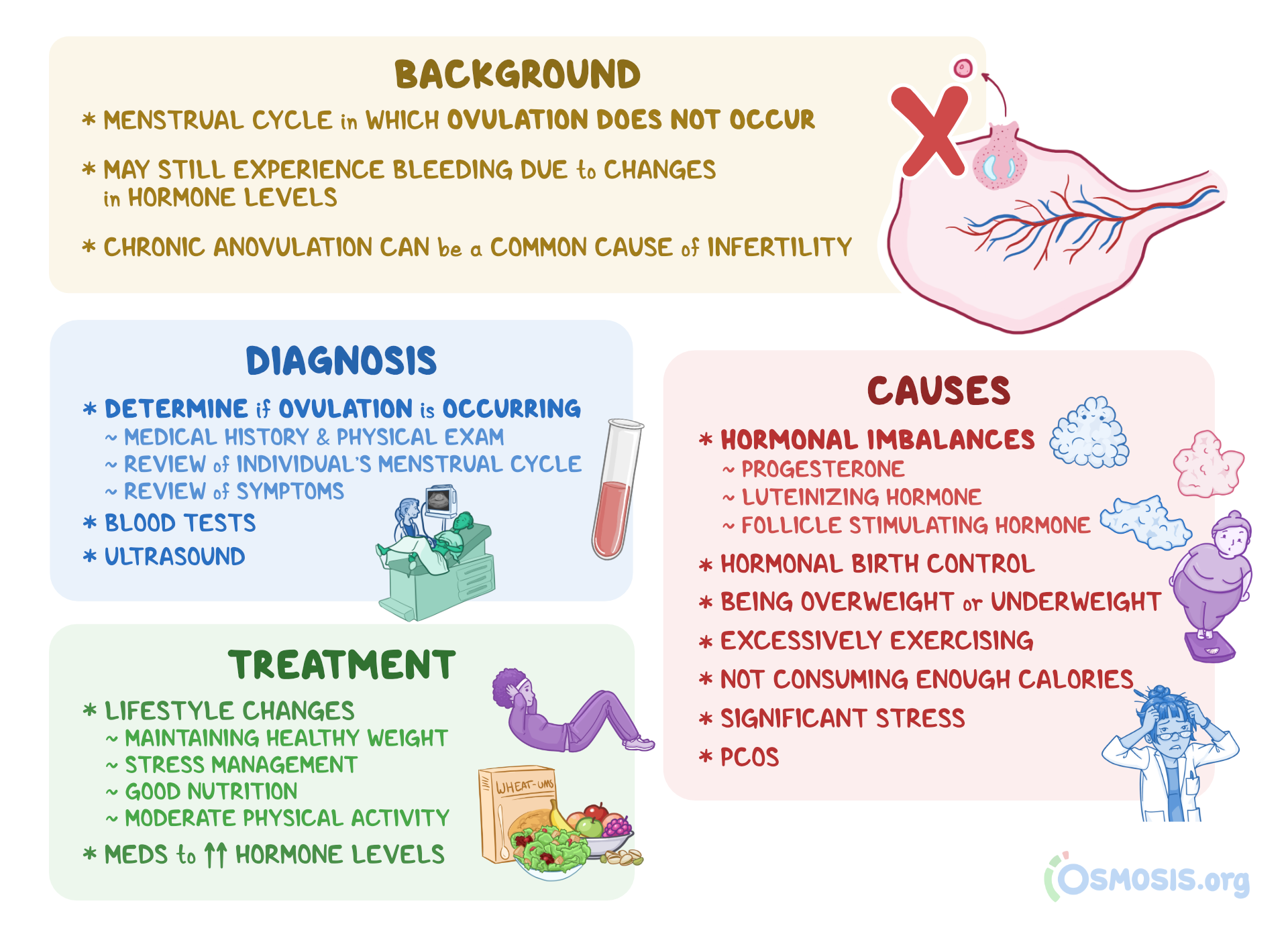Are you tired of the unpredictability and inconvenience of your menstrual cycle?
Imagine a life without the constant worry about annoying leaks and unexpected heavy flows.
Enter the fascinating world of anovulatory functional bleeding – irregular or heavy bleeding without ovulation.
In this brief guide, we’ll explore the causes, symptoms, and treatment options for this perplexing condition.
Discover how hormonal methods and weight loss could hold the key to reclaiming control over your menstrual cycle and experiencing a newfound sense of freedom.
Buckle up, because we’re about to uncover the secrets of anovulatory functional bleeding!
anovulatory functional bleeding
Anovulatory functional bleeding is characterized by irregular or heavy bleeding without ovulation.
Treatment options for this condition include combination oral contraceptives, medroxyprogesterone acetate, megestrol, and levonorgestrel-releasing intrauterine systems.
Combination oral contraceptives are effective for contraception but are contraindicated in certain individuals with specific medical conditions.
Medroxyprogesterone acetate and megestrol do not provide contraception and caution is advised in patients with severe hepatic dysfunction.
Levonorgestrel-releasing intrauterine systems provide contraception for five years but are contraindicated in certain patients.
Nonsteroidal anti-inflammatory drugs (NSAIDs) can be used to treat dysmenorrhea associated with anovulatory bleeding.
Tranexamic acid is an option approved for menorrhagia associated with anovulatory functional bleeding but caution is advised in patients with a history or risk of thromboembolic or renal disease.
Anovulatory bleeding occurs when ovulation does not happen and can be caused by various factors such as stressors, hormonal imbalances, and obesity.
Treatment options typically involve hormonal methods like the oral contraceptive pill or progestin-containing IUD, and weight loss is important for obese individuals experiencing anovulatory bleeding.
It is recommended to seek medical advice if there are concerns about irregular bleeding or menstrual cycle issues.
Key Points:
- Anovulatory functional bleeding is characterized by irregular or heavy bleeding without ovulation.
- Treatment options include combination oral contraceptives, medroxyprogesterone acetate, megestrol, and levonorgestrel-releasing intrauterine systems.
- Combination oral contraceptives are effective for contraception but contraindicated in certain individuals with specific medical conditions.
- Medroxyprogesterone acetate and megestrol do not provide contraception and caution is advised in patients with severe hepatic dysfunction.
- Levonorgestrel-releasing intrauterine systems provide contraception for five years but are contraindicated in certain patients.
- Nonsteroidal anti-inflammatory drugs (NSAIDs) can be used to treat dysmenorrhea associated with anovulatory bleeding.
anovulatory functional bleeding – Watch Video
💡
Pro Tips:
1. Anovulatory functional bleeding is a condition characterized by vaginal bleeding that occurs outside of a regular menstrual cycle, and is often associated with certain hormonal imbalances.
2. A little-known fact about anovulatory functional bleeding is that it can be influenced by various external factors such as stress, excessive exercise, and even changes in climate or altitude.
3. Despite its name, anovulatory functional bleeding is not limited to women of reproductive age, as it can also occur in prepubescent girls and women nearing menopause.
4. An interesting tidbit about anovulatory functional bleeding is that it can sometimes mimic the symptoms of a normal menstrual period, causing confusion and uncertainty about the underlying cause of the bleeding.
5. One lesser-known aspect of anovulatory functional bleeding is that it can sometimes be an indication of an underlying medical condition, such as polycystic ovary syndrome (PCOS) or thyroid disorders, requiring appropriate investigation and treatment.
Definition Of Anovulatory Functional Bleeding
Anovulatory Functional Bleeding: Irregular or heavy bleeding without ovulation
Anovulatory functional bleeding is a condition characterized by irregular or heavy bleeding without ovulation. Ovulation, the release of an egg from the ovary, typically occurs in a regular menstrual cycle. However, in cases of anovulatory functional bleeding, ovulation does not happen, leading to abnormal uterine bleeding. This condition can cause unpredictable menstrual patterns and potentially heavier periods.
Effects of Anovulatory Functional Bleeding
When ovulation does not occur, the lining of the uterus may build up without being shed, resulting in irregular and potentially prolonged bleeding. This condition often affects women during adolescence and the perimenopausal transition. While occasional anovulatory cycles are common, chronic anovulation can lead to more severe symptoms.
Treatment Options For Anovulatory Functional Bleeding
The treatment of anovulatory functional bleeding aims to regulate menstrual bleeding and prevent the buildup of the uterine lining. Several treatment options are available for individuals experiencing this condition:
-
Combination oral contraceptives: These contraceptives, containing ≤35 mcg of ethinyl estradiol, are effective for contraception and can also regulate menstrual bleeding. It is important to note that these contraceptives are contraindicated in individuals with specific medical conditions. Therefore, it is advisable to consult with a healthcare provider to determine the suitability of these contraceptives for individual needs.
-
Medroxyprogesterone acetate and megestrol: These hormonal medications do not provide contraception but can help regulate menstrual bleeding in individuals with anovulatory functional bleeding. However, caution is advised in patients with severe hepatic dysfunction when using these medications.
-
Levonorgestrel-releasing intrauterine systems: These systems provide contraception for up to five years and can help regulate menstrual bleeding. However, they are contraindicated in patients with breast cancer, uterine anomalies, acute pelvic or cervical infection, and severe cirrhosis or liver cancer.
It is important to consult with a healthcare provider to discuss the best treatment option for anovulatory functional bleeding.
- Combination oral contraceptives
- Medroxyprogesterone acetate and megestrol
- Levonorgestrel-releasing intrauterine systems
Contraindications Of Combination Oral Contraceptives
While combination oral contraceptives are an effective treatment option for anovulatory functional bleeding, they may not be suitable for everyone. Contraindications for using combination oral contraceptives include individuals with a history of blood clots, stroke, heart disease, liver disease, certain types of cancer, and certain types of migraines. It is crucial to consult with a healthcare provider to determine the appropriateness of these contraceptives based on individual medical history.
Caution When Using Medroxyprogesterone Acetate And Megestrol
Medroxyprogesterone acetate and megestrol are hormonal medications that can effectively regulate menstrual bleeding in individuals with anovulatory functional bleeding. However, it is crucial to be cautious while using these medications, particularly in patients with severe hepatic dysfunction. It is important to note that these medications do not provide contraception and their usage should be based on individual medical history. Therefore, it is strongly recommended to consult with a healthcare provider to ensure the safe and effective use of these treatments.
Contraindications Of Levonorgestrel-Releasing Intrauterine Systems
Levonorgestrel-releasing intrauterine systems (LNG-IUS) are a viable option for individuals experiencing anovulatory functional bleeding. However, it is important to be aware of certain contraindications before considering their use. Patients with breast cancer, uterine anomalies, acute pelvic or cervical infection, and severe cirrhosis or liver cancer should not use these systems. Prior to deciding on the use of LNG-IUS, it is crucial to have a thorough discussion regarding the patient’s medical history and potential contraindications with a qualified healthcare provider.
Nonsteroidal Anti-Inflammatory Drugs For Dysmenorrhea
Nonsteroidal anti-inflammatory drugs (NSAIDs), such as ibuprofen, naproxen sodium, and mefenamic acid, can be used to treat dysmenorrhea associated with anovulatory functional bleeding. Dysmenorrhea refers to painful menstrual cramps. These drugs help reduce pain and inflammation and can provide relief for individuals experiencing discomfort during their periods. However, it is important to follow the recommended dosage and consult with a healthcare provider if pain persists or worsens.
Tranexamic Acid As An Option For Menorrhagia
Tranexamic acid is FDA-approved for treating menorrhagia linked to anovulatory functional bleeding. Menorrhagia = heavy or prolonged menstrual bleeding.
Tranexamic acid reduces blood loss during menstruation and brings relief to people with this condition. However, caution is necessary for patients with a history or risk of thromboembolic or renal disease. Tranexamic acid should NOT be used by patients with active intravascular clotting or subarachnoid hemorrhage.
Explanation Of Anovulatory Bleeding
Anovulatory bleeding refers to abnormal uterine bleeding that occurs when ovulation fails to occur. Ovulation normally triggers the release of an egg and an increase in progesterone, which helps regulate the menstrual cycle. However, in cases of anovulation, progesterone levels remain low, resulting in irregular or heavy bleeding.
Chronic anovulation, particularly in instances of anovulatory functional bleeding, can lead to the buildup of the uterine lining without proper shedding, which can further contribute to irregular and potentially heavier bleeding. It is crucial to seek medical advice if experiencing irregular bleeding or menstrual cycle issues to determine the underlying cause and appropriate treatment.
Causes Of Anovulatory Bleeding
Anovulatory bleeding is a condition that can occur due to several factors. Hormonal imbalances during adolescence and the perimenopausal transition are known to disrupt the regular menstrual cycle and lead to anovulation. It should be noted that obesity is also a significant risk factor for anovulatory bleeding. Excess body fat can interfere with the hormonal signals required for regular ovulation, ultimately resulting in anovulatory cycles. In order to effectively treat and manage anovulatory bleeding, it is crucial to identify and address its underlying causes.
Importance Of Weight Loss And Seeking Medical Advice
For individuals experiencing anovulatory bleeding, weight loss can play a crucial role in managing the condition. Obesity is associated with hormonal imbalances that can lead to anovulation. Losing weight through a combination of a balanced diet and regular exercise can help restore regular menstrual cycles and alleviate symptoms of anovulatory bleeding.
However, it is important to seek medical advice if there are concerns about irregular bleeding or menstrual cycle issues. A healthcare provider can help diagnose the underlying cause of anovulatory bleeding, provide appropriate treatment options, and offer guidance on weight loss strategies.
Remember, each individual’s situation is unique, and personalized medical advice is vital for optimal management of anovulatory functional bleeding.
- Seek medical advice if experiencing irregular bleeding or menstrual cycle issues.
- A healthcare provider can diagnose the underlying cause and provide treatment options.
- Weight loss through a balanced diet and regular exercise can restore regular menstrual cycles.
💡
You may need to know these questions about anovulatory functional bleeding
What does anovulatory bleeding look like?
Anovulatory bleeding manifests as irregular bleeding patterns, differing from the normal menstrual cycle. It can be characterized by heavier and more prolonged bleeding compared to typical menstruation. However, the severity and duration of the bleeding may also vary depending on the root cause of the anovulation, occasionally appearing as light spotting rather than heavy flow.
Can you still bleed with anovulation?
Anovulation refers to the absence of ovulation, which is the release of an egg from the ovaries. Without ovulation, the hormonal changes necessary for a typical menstrual cycle do not occur. Therefore, while it is not possible to menstruate without ovulating, abnormal uterine bleeding can still occur. This type of bleeding, known as anovulatory bleeding or abnormal uterine bleeding (AUB), is irregular and not part of a normal menstrual cycle. It is important to consult with a healthcare professional to determine the underlying cause and appropriate treatment for AUB.
How can you tell the difference between anovulatory and ovulatory bleeding?
Differentiating between anovulatory and ovulatory bleeding can be determined through several factors. Firstly, the timing of the bleeding is crucial. Anovulatory bleeding is typically irregular and unpredictable, with no specific pattern. On the other hand, ovulatory bleeding tends to follow a consistent and cyclical pattern.
Furthermore, the characteristics of the bleeding can also provide insight. Anovulatory bleeding often exhibits irregular flow, ranging from lighter than usual to heavier. In contrast, ovulatory bleeding tends to be more consistent in terms of flow, generally following a regular pattern. Additionally, for those trying to conceive, infertility is more commonly associated with anovulatory cycles rather than ovulatory ones.
Do you get cramps with anovulatory bleeding?
While anovulatory bleeding itself is not directly associated with cramps, the accompanying symptoms like heavy menstrual flow can contribute to discomfort. Anovulatory cycles occur when ovulation does not take place, leading to hormonal imbalances. Although cramps are more commonly experienced during ovulatory cycles due to the release of prostaglandins, the hormonal irregularities associated with anovulation can still result in discomfort for some individuals. However, it is important to note that the severity and presence of cramps can vary from person to person during anovulatory bleeding.
Reference source
https://www.aafp.org/pubs/afp/issues/2012/0101/p35.html
https://www.verywellhealth.com/what-is-anovulatory-bleeding-2721851
https://www.webmd.com/infertility-and-reproduction/what-is-anovulation
https://my.clevelandclinic.org/health/diseases/21698-anovulation



